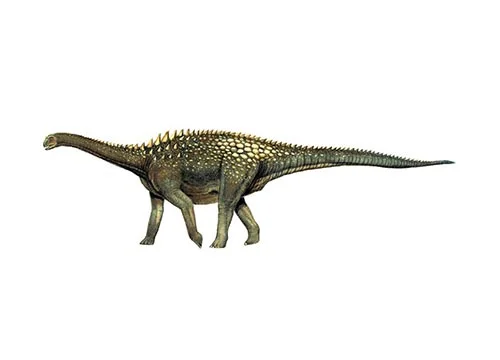Ampelosaurus (Vine lizard)

Am-pe-lo-sore-us
Jean Le Loeuff - 1995
Herbivore
Estimated 15 meters long
Sauropod
A. atacis (type)
France - Marnes Rouges Inférieures Formation
Late Cretaceous, 71-65 million years ago
Ampelosaurus Facts
Ampelosaurus (/,aempIloU’so:r@sor AM-pi-loh SOR-@s, which translates to “vine lizard”) is an titanosaurian sauropod dinosaur that was discovered in the Late Cretaceous Period of what is today France.
It was likely to have had a long neck and tail, but also had armor in the shape of osteoderms. More than 500 bones were assigned to Ampelosaurus, and all except the skullcase are identified as A. atis.
It shares many unique characteristics in common with A.atacis, but diverged in some ways from it. Nearly 8500 specimens were discovered alongside it, including bivalves, gastropods and sauropods, crocodiles, plants, and invertebrates. Ampelosaurus is an elongated sauropod believed to have measured between 15 meters (49 feet) to 16 meters (52 feet) in length and weighed around 15,000kg.
It was discovered in the Campagne-sur-Aude commune in the Aude region of France in the early Maastrichtian time period in the Late Cretaceous Period. It is recognized by its numerous bones that are not attached and teeth.
It is derived from Greek ampelos and Latinised Greek saurus, meaning “vineyard lizard”. The name of the vineyard is derived from the Latin atax, meaning the “Aude river”. The first remains of the bones were discovered in 1989 and include a complete skeleton that includes some parts of the skull and the lower jaw.
In 2001, the Campagne-sur-Aude site was explored and again by Gerard Chauvet, Jean-Luc Le Douarec Colette Rives, and Yvonne Vidoux.
In 2007, a massive emergency excavation enabled thousands of fossils of invertebrates, plants, and vertebrates from the late Campanian to early Maastrichtian period to be preserved. The entire skeleton was donated into the Musee des Dinosaures and took around 10 years to complete.



